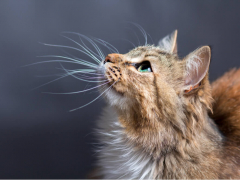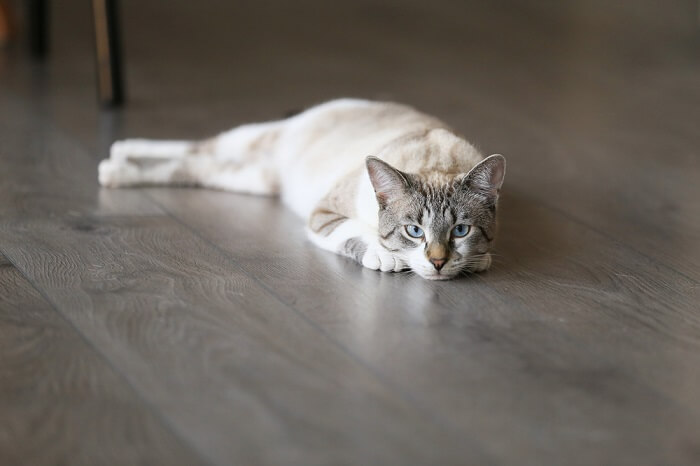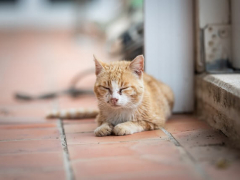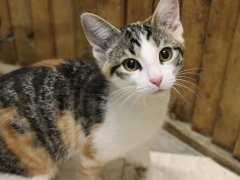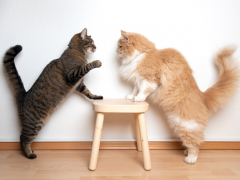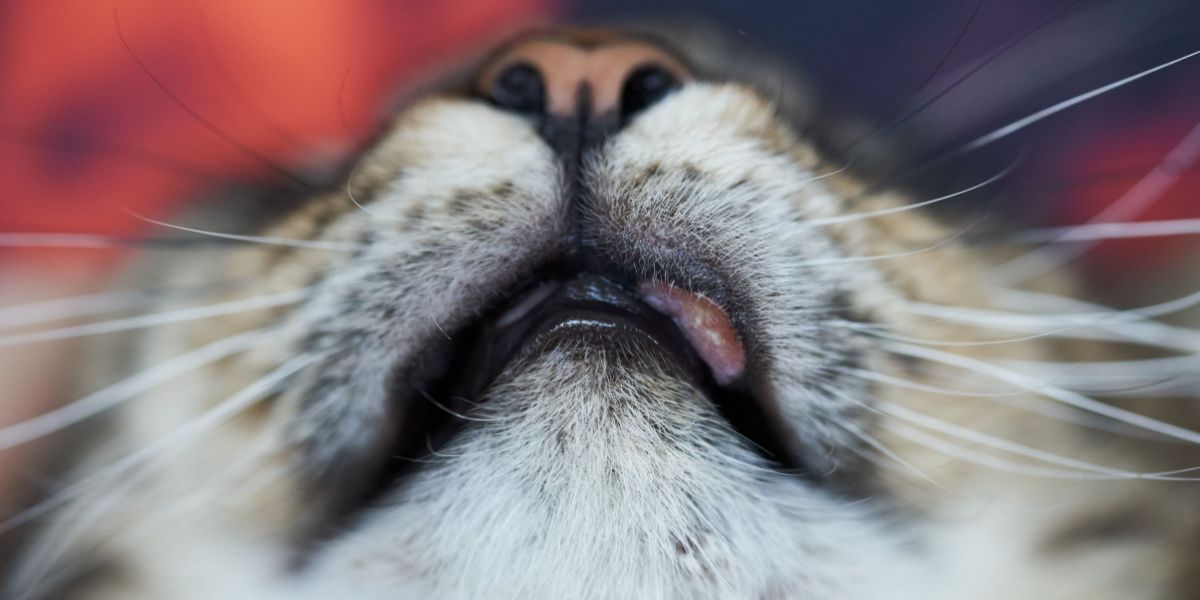
The eosinophilic granuloma complex (EGC) in cats is, well, complex. Rather than being a disease unto itself, the EGC is a collection of skin lesions that affect cats. In this article, we’ll tell you what you need to know about the eosinophilic granuloma complex in cats.
Basic Definitions
Before we talk about EGC lesions, let’s first go over some terminology. An eosinophil is an inflammatory cell that fights foreign invaders, like parasites, and can play a role in allergic reactions. These cells are full of granules that contain chemical substances that are released to destroy the invader.
A granuloma is a cluster of inflammatory cells that forms in response to inflammation.
What Causes the EGC?
There’s no definitive cause of the EGC. The most plausible cause is allergies, in that the lesions are an exaggerated response to an allergy, such as a food or flea allergy.
Genetics could be another cause.
It’s unknown how frequently the EGC occurs in cats. But the complex’s lesions tend to occur more frequently in female cats than male cats.
What Are EGC Symptoms?
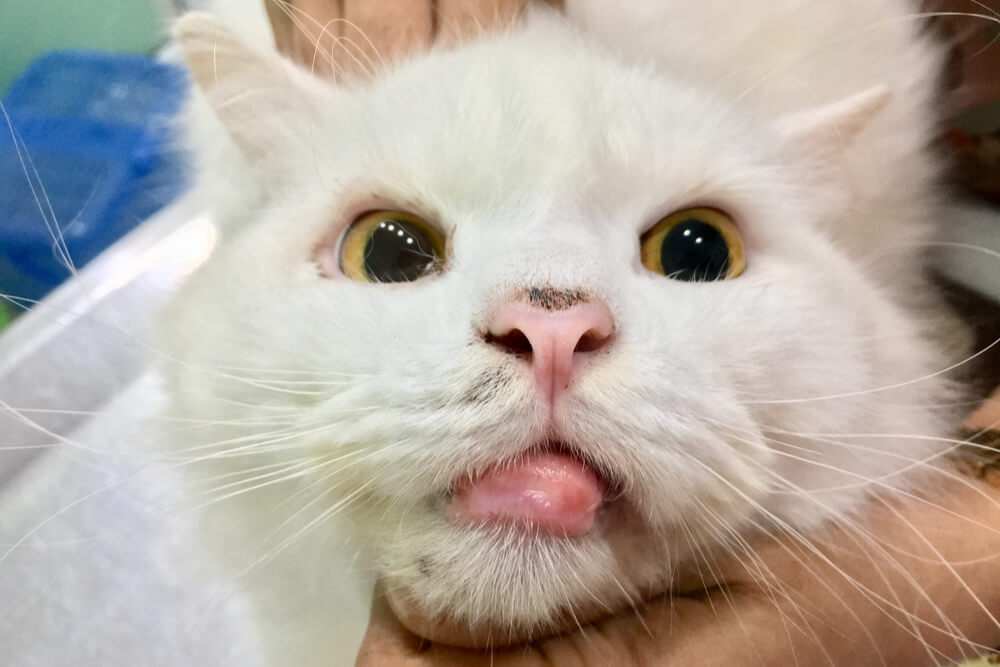
The eosinophilic granuloma complex includes a variety of types of skin lesions in cats, including ulcers, plaques, and granulomas. Symptoms are varied and depend on the types of lesions involved.
Three lesions compose the EGC: indolent ulcers, eosinophilic plaques, and eosinophilic granulomas. Cats can have one or a combination of these lesions, which are described below.
Indolent Ulcer
Indolent ulcers are also known as eosinophilic ulcers. Their other name—rodent ulcers— is a misnomer. They form on the upper lip margins, usually toward the front of the upper lip.
The ulcers are firm, have distinct edges, and are orange-yellow. They range from being small to quite large and disfiguring. The upper lip may swell because of the ulcer.
Indolent ulcers can bleed but are not particularly painful or itchy.
Eosinophilic Plaque
Eosinophilic plaques can be found in several parts of the body, most commonly on the belly and inner thighs. Other locations include the anal area, throat area, chest, and under the front legs.
The plaques are thick and very itchy, causing lots of discomfort for cats. They have distinct edges and are circular, raised, and red. Hair loss is common near the plaques.
The plaques can become large. Cats tend to lick and bite at the plaques, increasing the risk of bacterial infection.
Eosinophilic Granuloma
Eosinophilic granulomas are also known as linear granulomas and collagenolytic (collagen-destroying) granulomas. Like the plaques, these granulomas can show up in many places on the body, most commonly on the lower lip, chin, back of the thigh, and inside the mouth. Granulomas on the lip or chin give cats a ‘pouty’ appearance.
Granulomas can also be found on the footpads, causing painful swelling and difficulty walking.
Granulomas are raised, pink-yellow, and are nodular or linear. Often, there is hair loss in the area. The skin around the granuloma is usually thickened and may be ulcerated.
The classic eosinophilic granuloma appearance is a linear lesion running down the thigh.
Granulomas are occasionally itchy.
How Is the EGC Diagnosed?
EGC lesions resemble those of other skin diseases, like bacterial infections or skin cancer. Therefore, a veterinarian would need to rule out these other diseases before confirming an EGC diagnosis.
To rule out these diseases, a veterinarian will analyze a small tissue sample under a microscope. To obtain a sample, a veterinarian will suction cells from the lesions (‘fine needle aspirate’) or take a small chunk of tissue via a biopsy.
Using the microscope, the veterinarian will look for eosinophils and other indications of inflammation. They’ll also look for microscopic evidence of ulceration. The microscopic features of an EGC lesion will help to distinguish it from other skin diseases.
A veterinarian will also try to determine if there is an allergic cause of the EGC lesions.
Strict flea control would help to identify a flea allergy. A food elimination trial, which involves feeding a limited-ingredient diet for up to several months, would identify a food allergy. An environmental allergy would be identified using under-the-skin injections of tiny amounts of potential allergens, like pollen.
Also Read: Mange in Cats: Symptoms, Diagnosis, & Treatment
How Is the EGC Treated?
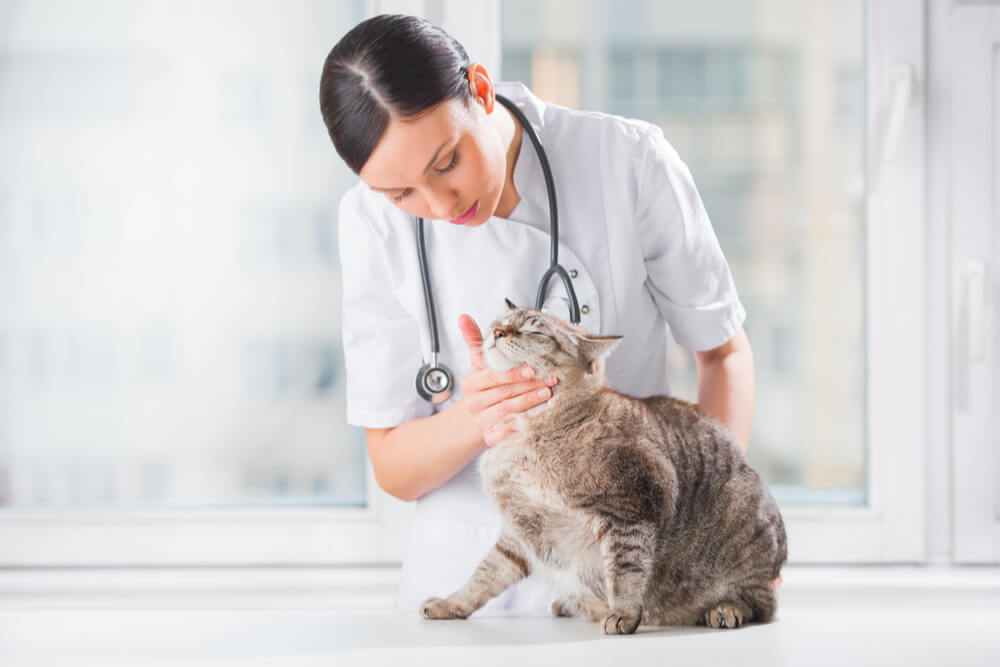
While some cases of eosinophilic granuloma complex lesions resolve on their own, other cats will require steroid injections or tablets.
Ideally, the underlying cause of the EGC lesion is identified and treated. In most cases, though, an underlying cause can’t be identified; in these cases, treatment is symptomatic.
Sometimes, small or mild EGC lesions spontaneously resolve. Most lesions will need medical treatment.
Steroids are the most common treatment for EGC in cats. They suppress the immune system and can be given as long-acting injections or tablets. Because EGC lesions can recur throughout a cat’s lifetime, steroid treatment may be needed intermittently for life.
Steroids do a fantastic job of treating the lesions. However, they have downsides. Long-term steroid use has serious side effects, such as urinary tract infections and thinning skin. To minimize these side effects, other anti-inflammatory medications, such as cyclosporine, will be given in addition to steroids (to reduce the required steroid dosage) or instead of steroids.
Antibiotics are given to treat secondary bacterial infections.
Flea control is often a component of EGC treatment because flea bites can cause intense allergic reactions. A flea allergy could worsen EGC symptoms, so appropriate flea control is needed to reduce the risk of an even bigger allergic response.
If the EGC lesions are severe and don’t respond to treatment, advanced treatment by a veterinary dermatologist would be warranted.
Be aware that skin damage can be permanent even if the lesions are successfully treated. This skin damage is caused by the chemicals that are released by the eosinophils.
Bringing It Together
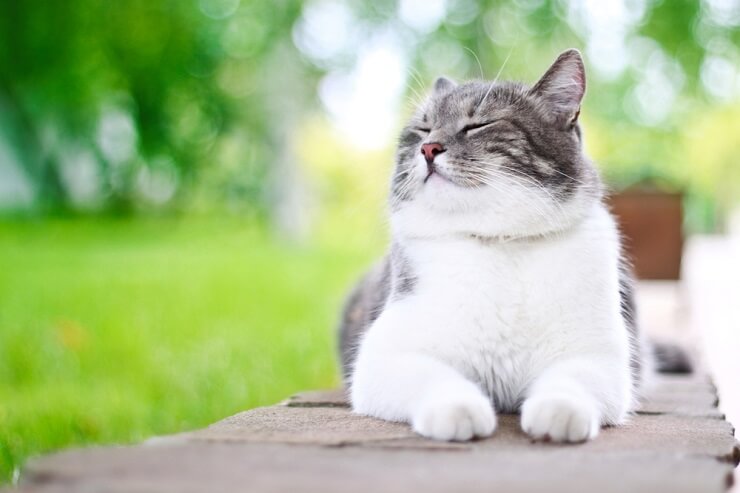
The EGC in cats is a complex and sometimes confusing medical condition. Take your cat to your veterinarian if you notice skin lesions that resemble the lesions described in this article. Prompt diagnosis and treatment will help to manage the lesions and help your cat feel more comfortable.
